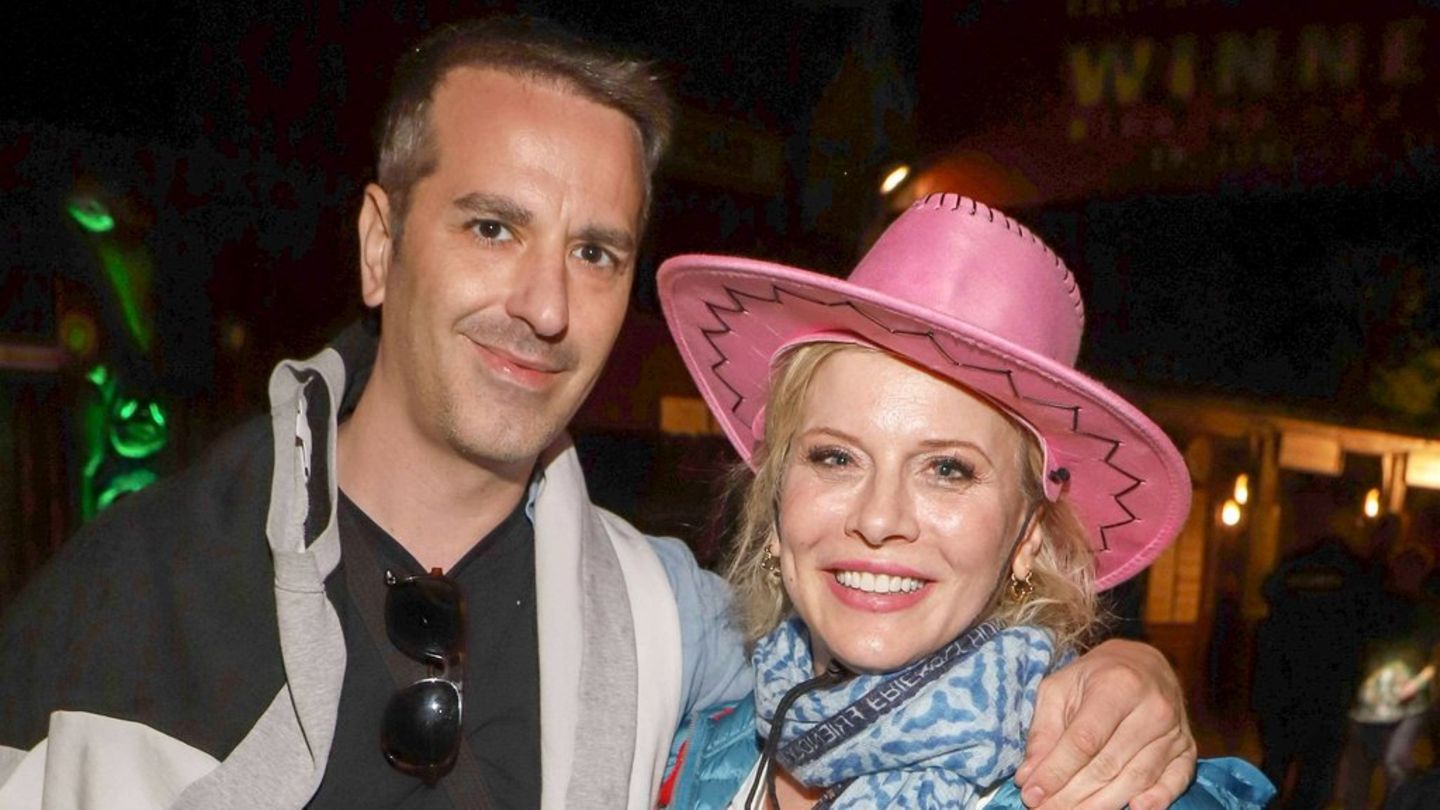Here are 8 little-known behind-the-scenes facts about this unforgettable story:
The two most recognized experts in the history of the Titanic participated in the film
James Cameron knew from the beginning that the Titanic project should be guided by a reconstruction as authentic as possible of the mythical ship declared “unsinkable” that sailed from Southampton, England bound for New York City and killed more than 1,500 people in the icy waters of the North Atlantic in the early hours of April 15, 1912.
To achieve this, he summoned the two great experts in the history of the Titanic, Don Lynch and Ken Marshallauthors of the renowned book “Titanic: An Illustrated History”. Over the decades, Lynch has extensively researched the ship’s history, speaking extensively with survivors of the tragedy and relatives of the victims. Marschall, for his part, is considered the main draftsman of the Titanic, author of highly realistic portraits of the ship that are internationally acclaimed for their precision and mastery.
The book, which represents the union of the passions of Lynch and Marschall, came into the hands of Cameron, who immediately dreamed of taking it to the big screen. “Jim Cameron had read our book. He was very impressed with Ken’s artwork and wanted to bring it to life on screen. Initially, Ken and I met with Jim to discuss the project. We then sat down with Jim’s treatment, going through it page by page looking for physical and historical accuracy,” Lynch says. During the production stage, in turn, the duo collaborated closely with the creative teams to reconstruct every detail of the ship, its furniture and its decoration.
Cameron and his team recorded real images of the remains of the Titanic
For Cameron, it was essential to include in the film images of the actual remains of the Titanic, found in two large pieces in 1995. To do this, he ventured with his team to the final resting place of the ship, approximately 640 kilometers from the coast of Newfoundland, Canada and five kilometers below the surface of the ocean.
The mission, however, required efforts never before seen in a film production. The filmmakers chartered a Russian science ship that housed two of five manned submersibles capable of reaching the required depths. Cameron’s brother, Michael Cameron, was recruited to deal with the various technological obstacles that stood between Jim and his vision, including sub-zero temperatures, lighting requirements, and the crushing force of water capable of imploding any normal camera housing. .
titanic.jpg
The effort was titanic, but it paid off. “We were able to come back with this rich harvest of film and video images. We send our remote vehicle inside and explore the interiors of the ship. We literally saw things that no one has seen since 1912, when the ship sank. We have integrated these images into the fabric of the film and that reality has a profound impact on the emotional power of the film”, says the director.
The inspiration behind the character of Rose
In the film, the character of Rose in the present is played by the actress Glory Stuart, who at the time of filming was 87 years old. To give life to old Rose, Cameron was inspired by the Californian artist Beatrice Wood, internationally recognized for its freshness and tireless energy. Following the actor’s recommendation Bill Paxton, who plays the character of Brock Lovett in Titanic, Cameron interviewed the artist who was 102 years old at the time. “Like Beatrice, Rose is a woman who survived. She knew what she wanted at a very young age. She didn’t want the kind of life that her mother had in mind for her,” says Stuart.
A replica of the Titanic was built
The 1912 Titanic sequences were filmed in the Mexican state of Baja California, where the ship’s exterior film set was built. The almost full size was 236 meters long and had a seawater tank of almost three hectares with 17 million gallons of water.
“No existing site in the world could contain the scale of our production and ancillary facilities that were required to film the scenes that Jim Cameron envisioned,” says Landau. “To support the scope of the film and to be able to facilitate both interior and exterior production, it was more efficient to custom build everything in one place,” says the producer, a longtime Cameron collaborator.
The space housed what was needed to meet all of the film’s production requirements, including a second 5 million gallon indoor water tank housed in a sound stage and three traditional sets. The studio also included production offices, set and prop storage, an electrical building, welding and fabrication shops, dressing rooms, and numerous ancillary support structures.
titanic.jpg

Pamount Pictures
The company that collaborated on the original Titanic and was also part of the film
The imprint of the real Titanic was present in a detail of the ship built for the film. The davits of the lifeboats that passengers boarded during the shipwreck, which consist of a system of pulleys and mechanisms necessary to lower the boats into the sea, were built by the same company that built the davits of the royal ship. “The Wellan Davit Company built our davits to their previous plans. We literally had the same piece of machinery that was used on the Titanic to lower a lifeboat,” Cameron reveals.
The artist behind Rose’s portrait
One of the elements of the film most remembered by fans is Jack’s portrait of Rose, completed on the day of the shipwreck and recovered some time later among the pieces found. The detail? The drawing was made by James Cameron himself. “Since the art department couldn’t find an artist who could complete the sketch as I envisioned it, I decided to draw it myself from Kate’s photographs,” says the filmmaker.
The rigorous training of the cast
In addition to having extraordinary period costumes and receiving vocal coaching to achieve the different accents of the various characters in the film, the cast worked closely with a team of experts in protocol and customs of the time to adopt the ways of doing the different social classes of the early twentieth century, and get rid of contemporary behaviors.
The production recruited choreographer and etiquette trainer Lynne Hockney to ensure that the actors represented the manners and behavioral customs of the time with a high degree of accuracy. “The Edwardian period produced hundreds of etiquette manuals. Especially for the upper class, it was a stifling time. From her clothing to her body language to her conversation, there were strict rules to follow,” says Hockney.
In turn, naval historian Kit Bonner oversaw shipboard protocol for officers and crew.
The hard work of the wardrobe, makeup and hairstyling teams
Along with the main cast of the film, nearly a thousand extras participated in the shooting. The number represented a great challenge for the wardrobe, makeup and hairstyling team, who had to create historically accurate looks for each of them. The three areas worked together in a building the size of a football field.
“This was an era of great formality. Rich people changed their wardrobe four or five times a day. Their clothes were so elaborate that the maids and escorts were absolutely necessary,” says costume designer Deborah L. Scott, who spent months doing extensive research on this period when costumes, perhaps more than ever, reflected the social role and personality of people. She then led a multinational team of seamstresses in an effort to restore thousands of wardrobe items, from gowns and suits to uniforms and headgear.
For her part, the film’s main make-up artist Tina Earnshaw faced the challenge of creating the effect of extreme cold on the faces of the actors and actresses for the scenes of the sinking of the ship. Her research led her to consult with hospitals and doctors about the effects of hypothermia, learning that tears freeze and wet hair breaks into icicles as a result of the bitter cold.
Finally, leading the hairstyling team, artist Simon Thompson purchased 450 wigs and hundreds of pieces of hairpieces for the film.
The secrets of the Titanic beyond the movie
To continue delving into the history of the ocean liner, the special National Geographic documentary Return to the Titanic is available on Disney+, which records the first manned raids where a group of experts uses a specially equipped submarine to capture the first 4K footage of the ship and thus Analyze the rate of deterioration and predict the future of the Titanic.
Accompanying the rerun of the film, National Geographic will be able to see different documentaries from Monday to Friday until February 16, among which Titanic 20 Years Later and Titanic: The Final Chapter with James Cameron stand out, where the director tests what that so many fans have wondered, did Jack enter the table with Rose?
The special edition of Titanic for its 25th anniversary can now be seen in theaters.
Source: Ambito
I am an author and journalist who has worked in the entertainment industry for over a decade. I currently work as a news editor at a major news website, and my focus is on covering the latest trends in entertainment. I also write occasional pieces for other outlets, and have authored two books about the entertainment industry.




